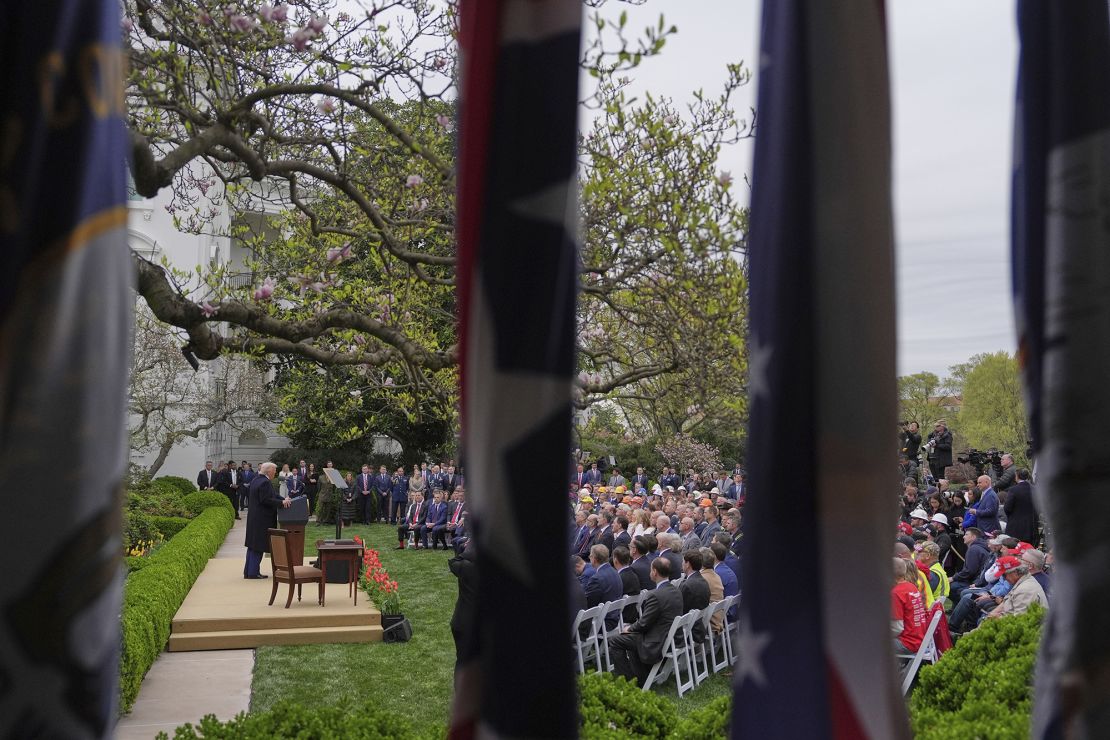
Trump’s Tariff Turnaround Sparks Market Whiplash And Economic Doubts
President Donald Trump's dramatic reversal on his sweeping tariff regime has exposed deep turmoil at the core of his administration, sending shockwaves through global markets and sparking fierce debate over America’s economic future. What started as a bid to usher in a “golden age of American greatness” risks devolving into a costly economic gamble with consequences likely to reverberate for months or even years.
On April 2, Trump’s much-heralded Rose Garden announcement of punitive tariffs was meant as a bold assertion of economic power. Instead, global stocks tumbled amid fears of a trade war and looming recession—drawing comparisons to the calamitous policy misfires of Britain’s Liz Truss. Facing market chaos, Trump abruptly softened some of the harshest tariffs just a week later, unveiling a 90-day pause on the sharpest hikes. Markets reacted instantly, with the S&P 500 surging by 9.5%, its biggest daily leap in nearly 17 years, relieving some immediate panic.

This U-turn, however, has not erased the fundamental tensions. The White House still enforces a broad 10% tariff on all imports and plans higher levies on Chinese goods. Experts warn these measures will cost average American families roughly $2,600 more per year, eroding household purchasing power. Democratic pollster Matt McDermott summed it up bluntly, noting that normal Americans care less about spin than about how tariffs hit their wallets.
Administration figures rushed to paint this retreat as strategic brilliance. Treasury Secretary Scott Bessent insisted Trump had engineered maximum leverage. Press Secretary Karoline Leavitt invoked ‘The Art of the Deal.’ Yet Trump’s own admission—that he pulled back because markets were “getting a little bit yippy, a little bit afraid”—revealed raw nerves more than master strategy. It betrayed a president rattled by Wall Street panic, not immune to it.
Meanwhile, the next rounds of tariffs threaten to deepen the pain, potentially targeting crucial imports such as copper, semiconductors, lumber, pharmaceuticals, and critical minerals, all with cascading effects. Economists caution that these moves, based on flawed calculations, break standard trade logic—trade deficits aren’t inherently bad and trying to ‘zero them out’ defies economic fundamentals.
Several experts, including Marcus Noland of the Peterson Institute and Jamie Dimon of JPMorgan, note that these tariffs risk inflation spikes, job losses, and a growth slowdown, with worst-case scenarios shaving 1.3 percentage points off GDP and costing up to 1.3 million jobs—bringing echoes of stagflation fears. Kathy Bostjancic at Nationwide warns inflation could climb above 4%, levels unseen in years.
Sectoral impacts deepen the concern: Copper supply constraints threaten the clean energy transition, lumber tariffs exacerbate housing affordability crises, and health care costs will likely rise due to pricier pharmaceuticals. Tariffs on semiconductors complicate technology supply chains, risking shortages on everything from smartphones to cars, despite domestic chip investments. Retaliation from trading partners may target US banks, airlines, and tech—a worrying scenario for America’s services-driven economy.

Overarching all this is a loss of confidence—both in US global economic leadership and in Trump’s ability to chart a consistent, coherent policy path. Critics suggest this episode was less a sign of strategic genius, more an impulsive move followed by a panicked retreat, one that could erode the President’s credibility and complicate GOP prospects in looming midterms.
Ultimately, Trump’s tariff saga embodies the risks of wielding economic power erratically. With sectors bracing for fallout, families facing rising costs, and allies questioning America’s trade posture, one big question remains: Will this gamble pay off, or will it burden Americans for years to come?
What’s your take on President Trump’s tariff rollercoaster? Share your views and join the debate below.
Related issues news
When did Trump start tariffs?
On March 1, 2018, Trump announced his intention to impose a 25% tariff on steel and a 10% tariff on aluminum imports. In a tweet the next day, Trump asserted, 'Trade wars are good, and easy to win.' On March 8, he signed an order to impose the tariffs effective after 15 days.
What does the US get from China?
iPhones and smartphones part of biggest sector of Chinese imports. According to a U.S. Department of Commerce Office of Industry and Security report on trade with China, mechanical appliances, sound recorders and TV sets were the most commonly traded commodity sectors between China and the U.S. in 2022.
Does China have a tariff on the US?
So far, China has either imposed or proposed tariffs on $110 billion of U.S. goods, representing most of its imports of American products.
How and when are tariffs collected?
Tariffs on imported goods are typically paid after shipments come into the U.S. Levies aren't collected at a tollbooth as goods cross the border. Instead, importers must calculate and pay the duties electronically or by check after the fact.